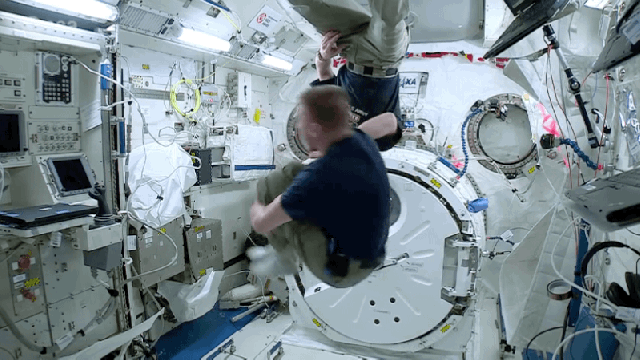Astronauts typically need a couple of days to get used to microgravity. But as Tim Peake demonstrates in this video, astronauts eventually develop an extreme tolerance to all that spinning and floating.
Not surprisingly, the body’s vestibular system, which is responsible for coordinating movement and balance, goes a bit squirrely in microgravity. Eventually, after about 24 to 48 hours, it (mercifully) shuts down and lets the eyes do the work. And thank goodness for that. Once astronauts become acclimatised to space, they can function and work without feeling nauseous or dizzy.
With the pause button pressed on the vestibular system, astronauts can tolerate some rather nasty physical conditions. In this new ESA video, Tim Peake and fellow ISS astronaut Tim Kopra, conduct a neat space-based experiment in which Peake is spun around and around in a cannonball.
It looks just awful, but he’s able to withstand the intense spinning. What’s more, it takes him just a brief moment to regain his bearings once it’s all over. He barely looks phased by the experience, demonstrating that once you finally get used to space, it’s quite hard to get dizzy.
[ESA]
